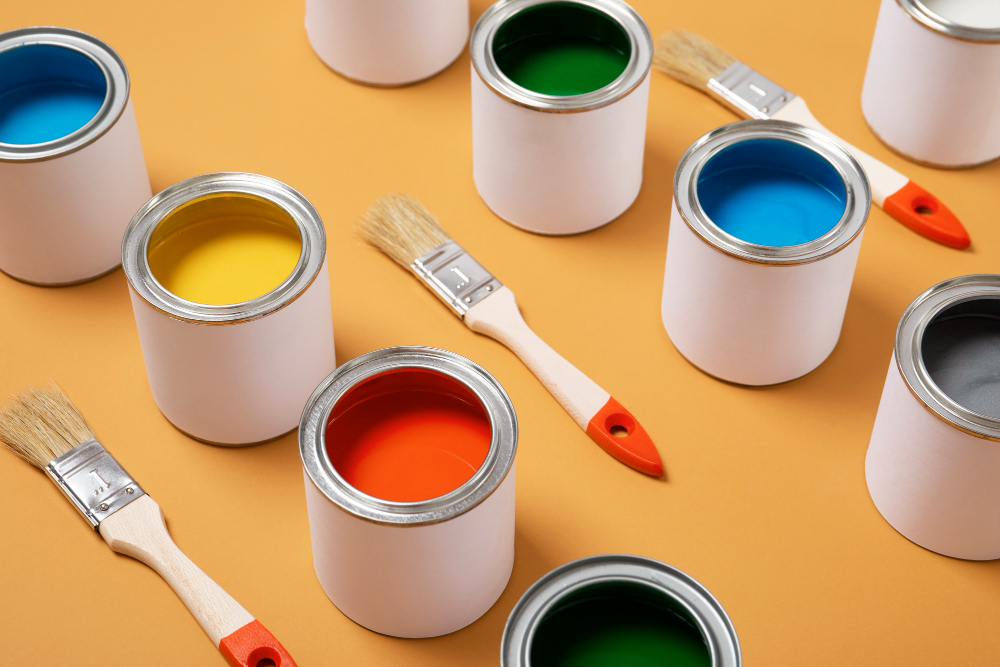Understanding the Differences: Oil, Enamel Paint, and Wall Paint

Choosing the right type of paint for a project can be challenging, especially when faced with the myriad of options available on the market. Understanding the distinctions between oil-based paint, enamel paint, and wall paint is crucial for achieving desirable results, whether you’re tackling a DIY project or planning for commercial painting in South Daytona, FL. Here, we shall delve into each type, their benefits, and their optimal uses. Plus, if you find yourself needing professional assistance, don't miss the opportunity to contact Color Masters Painting for a free quote.
The Essence of Oil-Based Paint
When it comes to durability and richness, oil-based paints are a venerable option. Composed of pigment suspended in an oil such as linseed, these paints are renowned for their toughness and high-gloss finish.
Pros of Oil-Based Paint:
- It creates a hard, durable finish that stands up to heavy wear and tear.
- The longer drying time allows for a smoother, more even application and finish.
- It offers deep color saturation for a more vibrant hue.
Cons of Oil-Based Paint:
- They require solvents like turpentine or mineral spirits for cleaning up.
- They tend to yellow over time, especially in areas with little sunlight.
- Oil-based paints release Volatile Organic Compounds (VOCs) and have strong odors.
Suitable Applications:
- Trim work
- Mouldings
- Doors
- Cabinets
Enamel Paint: Hard, Glossy, and Versatile
Enamel paint can either be oil-based or water-based, known for its high durability and glossy finish. It's perfect for surfaces that endure a lot of use or come into frequent contact with varying temperatures and moisture.
Pros of Enamel Paint:
- Offers a rugged, easy-to-clean surface ideal for kitchens and bathrooms.
- Good for both outdoor and indoor applications due to its hardiness.
- Comes in various gloss levels from flat to high-gloss.
Cons of Enamel Paint:
- Some varieties can take a long time to dry.
- May chip over time and generally harder to repair.
Suitable Applications:
- Kitchen and bathroom walls
- Outdoor furnishings
- Appliances
- Trim
Wall Paint: The Go-To for Interior Spaces
Wall paint, predominantly water-based or latex paint, is a popular choice for interior projects. Latex paints dry quickly and have a lower level of odor and harmful emissions.
Pros of Wall Paint:
- Drying times are significantly less compared to oil-based options.
- They resist the formation of mildew and endure fading better.
- Cleanup is a breeze with soap and water.
Cons of Wall Paint:
- May not be as durable as enamel or oil-based paints.
- Not typically suitable for high-traffic or rough areas.
Suitable Applications:
- Bedroom and living room walls
- Ceilings
- Hallways
Key Factors to Consider
Before selecting paint for your project, consider these factors:
- The surface you are painting
- The level of foot traffic and wear the area will receive
- Your own capability in handling the painting process and cleanup
- The desired finish and appearance
Contact Color Masters Painting for a Free Quote
Not sure which paint to choose for your commercial space or need a professional application? Color Masters Painting is here to help. Reach out to us today for tailored advice and a complimentary estimate. Drive your South Daytona business forward with a fresh coat of excellence. Thank you for reading, and we look forward to bringing color to your commercial space!